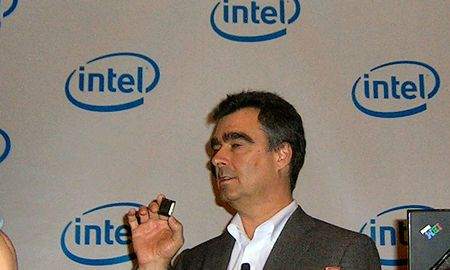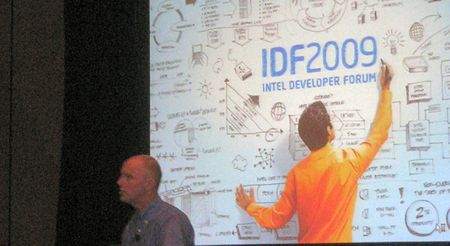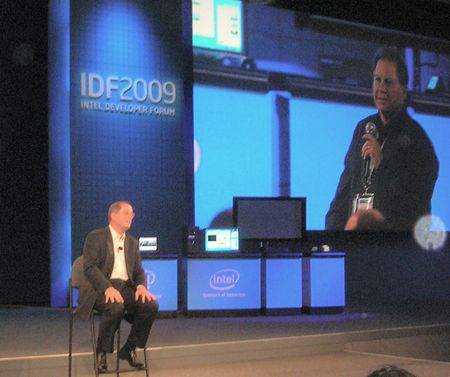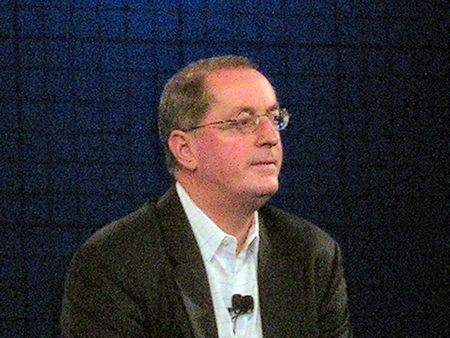The saying “a curate’s egg” comes from a cartoon in Punch in 1895, the punchline being that the egg Mr Jones was eating was only “good in parts” – that is to say, downright inedible.
You couldn’t say that about last week’s Intel Developer Forum (IDF) – let us rather describe it as a bishop’s egg – the only bad part about it being the shell that covers the interior. Or maybe IDF was an onion – there are many different layers here that need unpeeling.
Chips
Intel showed us all a number of developments that make it entirely clear that it’s bang on course on its roadmap and nothing short of a catastrophe is going to stop it from executing on most of those plans. We only say “most” because we’re far from certain that it is going to stomp all over the smartphone world and persuade everyone that its chips should be absolutely everywhere. We don’t believe the smartphone people want it, and we’re not yet convinced that despite its ambitious plans for the Atom chip it’s going to achieve its goals.

Steve Smith shows off a little chip
What is good is the roadmap senior VP Steve Smith showed us, which indicates that it will move very fast indeed from a 45 nanometer process to a 32 nanometer process. Typically, we understand, the move from one process to another costs around $1 billion, but Intel had the confidence to disclose quite a lot about its 22 nanometer process too. A nanometer is a billionth of a meter, if you try and visualize just how thin that is you’ll fail.
CEO Paul Otellini said it’s pretty confident that its Sandy Bridge next generation CPUs will be available by this time next year and that it will have few obstacles getting to 15 nanometers.
Netbooks
Sean Maloney, now the obvious successor to Paul Otellini when he steps down as CEO, assured us during a press briefing that netbooks hadn’t cannibalized the notebook market. He said that originally he’d expected the netbook to be popular in developing countries but that the opposite had proven to be the case – people were buying netbooks as additional machines they could tote around if they needed to be online.

Where the Atom chip has cannibalized the rest of the Intel chip SKUs (stock keeping units) is that it’s eaten into Celeron sales – but these are crippled CPUs that Intel doesn’t make much money on anyway.

Paul Otellini Q&Aed by a giant
Maloney’s views aren’t necessarily shared by his customers. One big manufacturer of notebooks that did not want to be named said that overall there was tremendous price cutting and that part of this was due to Intel’s push into the netbook market. This same source told us that Intel’s CULV (consumer ultra low voltage) nomenclature was a mistake – the very thin and light machines had a perception problem and so far weren’t hogging what the industry describes as the “sweet spot”. The big notebook vendors are pressuring the smaller vendors because of frenzied price slashing and the netbook is, to quite some extent, responsible for this.
WiMAX
OK – so WiMAX was supposed to be with us by now. Sean Maloney told us when we wrote for the IT Examiner 14 months ago that its success depended on bandwidth being made available for it by various governments and other authorities. But while WiMAX does exist in some territories, we’ve yet to see Intel provide a WiMAX service at its own jamboree, the Intel Developer Forum.

Don’t cry for me Otellini, the truth is I always loved you
And, for that matter, no-one at Intel seems to have heard about the European move to LTE, a technology that appears to be far closer than widespread WiMAX deployment and doesn’t depend on Intel chips at all.
Television
Yeah, lots of people watch TV on their notebooks now. The BBC has had its excellent iPlayer working for a good while – if your handheld has good enough resolution and the right connection, TV works pretty well there too.
But if you sit down in front of a television in your house, you don’t necessarily want a widget experience with things popping up and down just like IM windows do on your PC. Watch the TV and you want to watch the TV. No one really wants a multi-stream internet optimized screen with social network and screaming video unless they’ve chosen screaming video.
Politics
The most interesting bit of IDF was that the departure of high flier Pat Gelsinger has obviously left quite a bit of a power vacuum.

Chips with everything. Even eggs
High flying executives were mixing with the scum of the earth, that is to say journalists, with never a PR minder to be soon. This is highly unusual, to say the least, and indicates that said high flying executives are jockeying for position until everything settles down a bit and someone imposes the usual rule by a rod of iron.
The Intel board, we are reliably informed, takes a very very dim view of this, being concerned with the stability of the organization. It’s almost as if a laissez faire attitude permeated the higher ranks of the corporation. There is nothing laissez faire about Paul Otellini – we can assure you.
Don’t forget that he inherited the mantle of CEO when the company was going through a very bad patch indeed. He’s good at execution, he’s executed. His job is safe, barring a catastrophe or a disaster.
Sean Maloney has been given a considerable challenge with his new job. He will have to execute on that internal roadmap.






